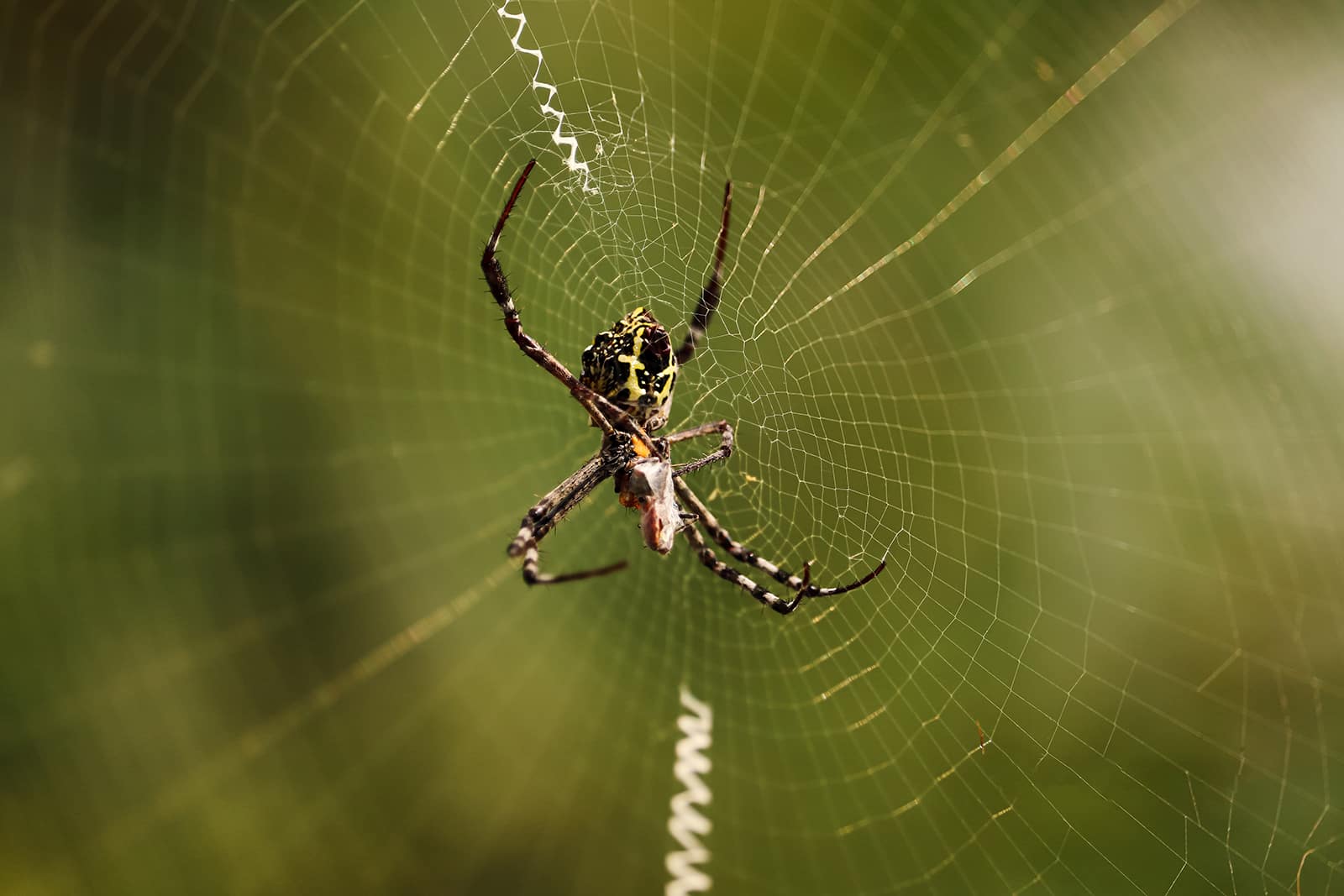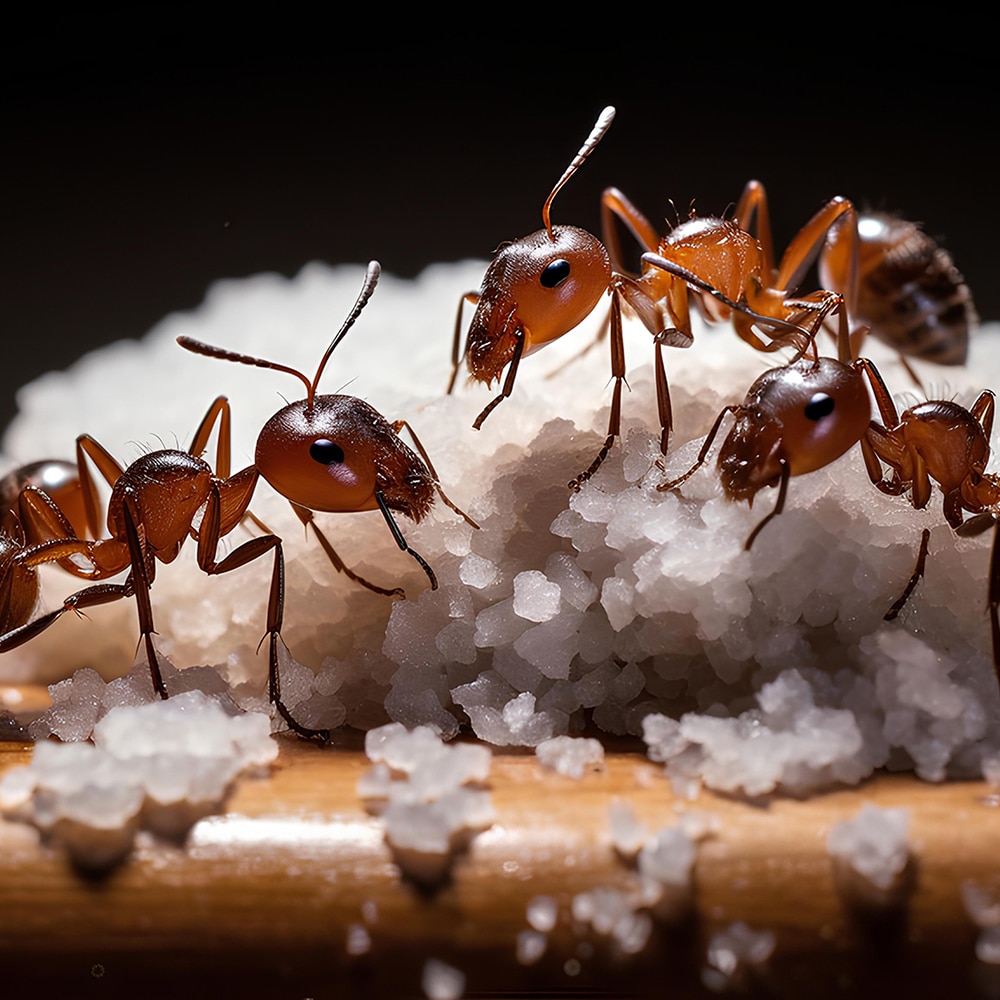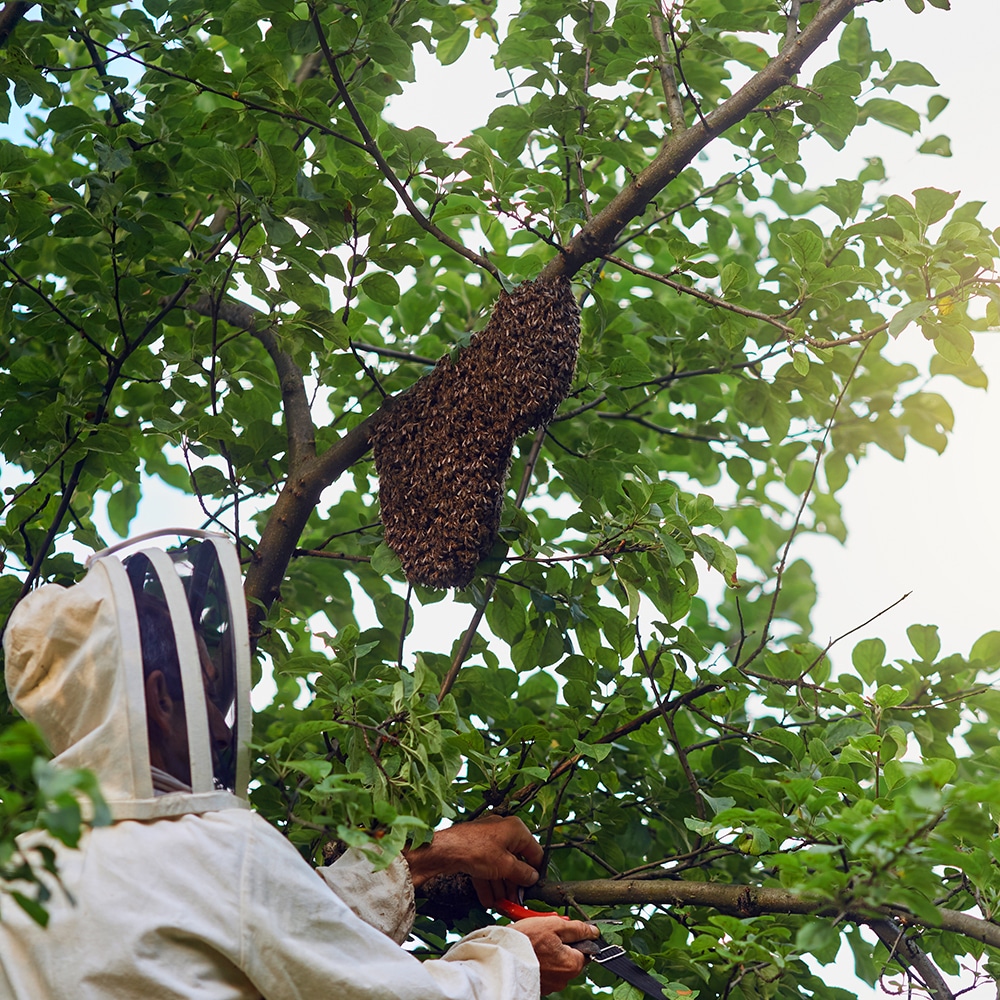
Why Do Spiders Come Back And Why
Why Do Spiders Come Back And Why On The Central Coast NSW. Responsive Proactive Solutions. Detail-focused for lasting results. Call Adam on 0431 222 894
Discovering ants in your home can be concerning. Recognising ant species and colonies is essential for effective pest control. At Vital Pest Control, we offer reliable solutions for Central Coast NSW residents.
Carpenter Ants vs Sugar Ants
Carpenter ants damage wood, while sugar ants hunt sweets. Recognising ant species helps target infestations effectively. Carpenter ants are larger, often black, while sugar ants are small and brown. Identifying these ants early can prevent major repairs.
Typical Colony Sizes
Colony size varies by species. Carpenter ants have large colonies, while sugar ants form smaller ones. Understanding colony size aids in planning control measures. Large colonies may need professional pest control services to ensure thorough treatment.
Identifying Queen Ants
Queen ants are generally larger with a distinct thorax. Spotting a queen indicates a colony nearby. Removing queens can disrupt colony growth. Professional pest control can help identify and remove queens efficiently.
Pheromone Trails
Ants leave pheromone trails to guide others to food. Disrupting these trails can deter ants. Cleaning surfaces with vinegar can erase these trails. This simple step can reduce ant presence in your home.
Nesting in Soil vs Wood
Carpenter ants nest in wood, causing structural damage. Sugar ants prefer soil. Recognising nesting habits can help locate colonies. Addressing nests promptly can protect your property from costly damage.
Common Foraging Patterns
Ants forage in lines, following pheromone trails. Recognising ant species helps identify foraging patterns. Sugar ants often invade kitchens, while carpenter ants target wood. Observing these patterns can aid in choosing effective baits.
Winged Ants in Swarm Season
Winged ants appear during swarm season to form new colonies. They resemble flying termites but have differences. Swarm season signals a potential infestation. Quick action can prevent new colonies from establishing.
Physical Differences from Termites
Ants have bent antennae and a pinched waist. Termites have straight antennae and a broad waist. Recognising these differences prevents misidentification. Accurate identification ensures appropriate treatment methods.
For expert help with ant infestations, Contact us today. Discover how we can help you with effective pest control solutions on the Central Coast NSW.

In Central Coast NSW, identifying the different ant species is crucial for effective pest control. Carpenter ants and sugar ants are common invaders, each with unique traits and behaviours. Understanding these differences helps in choosing the right pest control methods.
Carpenter Ants
Carpenter ants are large and notorious for their wood-damaging habits. While they do not eat wood like termites, they excavate it to create nests, potentially compromising structural integrity. These ants are usually black or dark brown and can be found foraging primarily at night. Homeowners often spot them near damp or rotting wood, making them a concern for those with wooden structures. Vigilance in identifying signs of infestation can prevent costly repairs.
Sugar Ants
Sugar ants, on the other hand, are smaller and often drawn to sweet substances. These ants are commonly seen in kitchens and pantry areas, attracted by sugary spills and crumbs. They forage both day and night, making them visible nuisances. Unlike carpenter ants, sugar ants do not pose structural threats but can contaminate food supplies. Regular cleaning and sealing food containers can help manage their presence.
Understanding these ant species aids in choosing the right pest control approach, ensuring more effective management and prevention strategies for homes and businesses in Central Coast NSW.
The Central Coast of NSW is home to various ant species, each with its unique colony size. Understanding these colony sizes can help in effective pest control. This knowledge is crucial for property owners looking to manage ant infestations effectively. Local pest control services can provide tailored solutions based on colony characteristics.
Small Colonies
Some ant species on the Central Coast form small colonies, typically ranging from a few dozen to a few hundred ants. These smaller colonies often inhabit garden areas or small crevices around homes. They may be less noticeable but can still cause problems if they invade indoor spaces in search of food or water. Quick identification and control can prevent larger infestations.
Medium-Sized Colonies
Medium-sized colonies often consist of several hundred to a few thousand ants. These colonies can be more persistent and are usually found in larger outdoor areas such as yards or under paving stones. They can become a nuisance if not managed promptly, often requiring more extensive pest control measures to keep them from spreading.
Large Colonies
Large ant colonies can contain tens of thousands of ants and can be a significant challenge on the Central Coast. These colonies often extend deep underground or within structures, making them harder to eliminate. Professional pest control is usually necessary to manage these large colonies effectively, ensuring they do not damage property or become a recurring issue.
Identifying queen ants is crucial for effective pest control on the Central Coast, NSW. Queen ants, being the heart of the colony, require a keen eye and knowledge to spot. Understanding their role and appearance helps in managing ant infestations effectively.
Physical Characteristics of Queen Ants
Queen ants are larger than worker ants, often twice the size. They possess a robust, well-defined thorax due to their winged past, even if they no longer have wings. Their abdomen is noticeably more extended to facilitate egg-laying, the primary function of a queen ant. This distinctive shape makes spotting them easier once you know what to look for.
Behavioural Traits
Queens generally stay within the nest, focusing on reproduction. They are less active than worker ants, rarely seen foraging. However, during nuptial flights, virgin queens leave the nest to mate and establish new colonies. Spotting them during this period can help prevent future infestations by intercepting new colonies early.
Importance in Pest Control
Targeting queen ants in pest control is vital. Eliminating the queen disrupts the colony’s lifecycle, preventing further reproduction. This approach is more effective than tackling worker ants alone. For Central Coast residents, understanding and identifying queen ants can lead to more successful pest control strategies, ensuring homes are free from persistent ant problems.
Ants are a common issue on the Central Coast, NSW, and understanding their behaviour is crucial for effective pest control. One fascinating aspect of ant behaviour is their use of pheromone trails. These invisible chemical paths guide ants in finding food and returning to their colony, making them a key focus for controlling infestations.
Understanding Pheromone Trails
Pheromone trails are a sophisticated communication method used by ants. When a worker ant finds a food source, it releases pheromones as it returns to the nest. This chemical trail acts like a roadmap, guiding fellow ants to the food. These trails can be reinforced when more ants travel along them, creating a stronger signal.
Disrupting Ant Trails
For effective pest control, disrupting these trails is essential. Removing pheromone trails can confuse ants and significantly reduce their ability to find food. Using vinegar or soapy water to clean surfaces can help break down the chemical cues, making it harder for ants to navigate.
Pheromone Trail Identification
Identifying these trails can assist in pinpointing the main colony. By observing ant movement patterns, pest control professionals can locate and target the nest directly. This strategy allows for more focused pest control measures, reducing ant numbers efficiently.
Understanding where ants nest is crucial for effective pest control on the Central Coast of NSW. Ant colonies can be found in various environments, but soil and wood are two primary nesting sites. Recognising these can help in implementing the right pest control strategies, ensuring a more targeted approach.
Soil Nesting Ants
Soil provides a natural habitat for many ant species, offering moisture and protection. Ants like the coastal brown ant prefer to dig their nests in sandy or loamy soils. These nests can be extensive, with intricate tunnels. Soil nesting ants often create visible mounds or disturbed earth, making them easier to spot. However, their underground colonies can spread rapidly, posing a challenge for pest control efforts. Effective solutions often require treating the soil directly to reach the heart of the nest.
Wood Nesting Ants
Wood nesting ants, such as carpenter ants, are a different challenge. They excavate wood to build their nests, often targeting damp or decaying timber. Unlike termites, they do not consume wood but can cause significant structural damage over time. Spotting sawdust or wood shavings can indicate their presence. Controlling these ants requires addressing moisture issues and treating the affected wood with specialised products to prevent further infestations.
Understanding the foraging patterns of ants is crucial for effective pest control on the Central Coast of NSW. Different ant species have unique behaviours, and recognising these can help in identifying the type of infestation and the most effective control strategies. By observing their foraging habits, you can gain insights into the colony’s size, location, and preferred food sources, enabling you to tackle the problem more efficiently.
Day vs Night Foraging
Ants exhibit varying foraging patterns based on the time of day. Some species, like sugar ants, are more active during the night. They scavenge for sweet substances under the cover of darkness, making them harder to spot. In contrast, other ants, such as coastal brown ants, forage during the day. Observing the time when ants are most active can help identify the species and tailor pest control measures accordingly.
Pathway Patterns
Ants often follow specific paths, forming trails that lead to food sources. These trails can indicate the colony’s location. On the Central Coast, pavement ants are known for creating distinct trails on concrete surfaces. By identifying these pathways, pest controllers can locate nests and apply targeted treatments, reducing the need for widespread pesticide use.
Food Preferences
Different ant species have varied dietary preferences. For instance, black house ants are attracted to protein-rich foods, while Argentine ants favour sugary substances. Recognising these preferences can help in selecting the right bait and control methods. On the Central Coast, understanding these preferences ensures more efficient pest management, reducing the impact on non-target species.
Winged ants on the Central Coast of NSW can be both fascinating and frustrating. These ants, often mistaken for termites, emerge in large numbers during swarm season. Understanding their behaviour and lifecycle can help manage their presence effectively. Vital Pest Control provides insights to help residents identify and deal with these seasonal visitors.
Understanding Swarm Season
Swarm season typically occurs during warmer months, following rainfall. This period provides ideal conditions for winged ants to leave their nests in search of new colonies. The sudden appearance of these ants can be alarming, but it is a natural part of their reproductive cycle. Recognising this behaviour helps in identifying ant species and assessing potential pest issues.
Identifying Winged Ants
Winged ants can be distinguished from termites by their body structure. Ants have a narrow waist and bent antennae, whereas termites display a thicker waist and straight antennae. Observing these features can prevent unnecessary panic and ensure appropriate pest control measures are taken. Identifying these ants correctly is crucial in managing possible infestations.
Managing Winged Ant Infestations
Effective management involves locating and treating the source colonies. Professional pest control services can assess the situation and apply targeted treatments. This approach not only addresses the immediate swarm but also prevents future infestations. On the Central Coast, expert assistance ensures that winged ant issues are resolved efficiently, maintaining the comfort of your home or business.
Understanding the physical differences between termites and ants can be crucial for effective pest management on the Central Coast of NSW. Termites and ants often get mistaken for each other due to their size and social behaviour. However, distinct physical traits help differentiate them, aiding in accurate identification and management by Vital Pest Control.
Body Structure
Termites have straight, beaded antennae, while ants feature elbowed antennae. This difference is significant when identifying pests. Termite bodies are broad and uniform in width, lacking a defined waist. In contrast, ants possess a narrow, constricted waist, clearly segmenting their bodies. Recognising these distinctions helps in determining the type of infestation.
Wing Differences
Both termites and ants have winged members, but their wings differ. Termite wings are of equal length and extend beyond their abdomen. Ant wings differ in size, with front wings longer than their hind ones. This variation is a key identifier during swarming seasons when both species are most visible.
Colour and Texture
Termites generally display a pale, almost translucent colour, while ants vary widely, often appearing darker. The texture of termite bodies is soft, unlike the harder exoskeleton of ants. These physical characteristics assist Vital Pest Control in implementing precise pest control measures tailored for the Central Coast.
The Central Coast of NSW is home to a diverse range of ant species. Understanding their feeding preferences is crucial for effective pest control. Different species have unique dietary needs, influencing their behaviour and habitat. Knowing what attracts them can help in developing targeted strategies for management.
Protein-Loving Predators
Certain ants, like the meat ant, display a strong preference for protein. They often hunt or scavenge insects. This dietary need makes them aggressive and territorial. Effective pest control involves removing potential protein sources from the environment, such as dead insects or pet food. This discourages their presence and limits colony expansion.
Sugar Seekers
Many ants, including the common black ant, are drawn to sugary substances. They invade kitchens or gardens in search of sweets. Limiting access to sugar by sealing food containers and cleaning spills is key. Pest control solutions often include baiting techniques that exploit their sugar cravings, luring them away from homes.
Grease Eaters
Some ants have a taste for fats. They target oily foods or grease trails. This is particularly true for species like the thief ant. Managing these pests requires regular cleaning of kitchen surfaces and proper waste disposal. Understanding their preference for fats allows for the use of specific baits that cater to their tastes, enhancing control efficiency.
Understanding how ants behave under stress is crucial for effective pest control. On the Central Coast of NSW, recognising stress responses in ant colonies can help identify species and inform control strategies. This knowledge aids in managing infestations and minimising disruption to households.
Stress-Induced Movement Patterns
When stressed, ants often exhibit erratic movement patterns. They may scatter or form dense clusters, attempting to protect their queen and resources. Observing these patterns can indicate the presence of a threat or environmental change. Vital Pest Control can use these insights to tailor their approach, ensuring targeted and efficient extermination.
Communication Changes
Ants rely heavily on pheromone trails for communication. Under stress, these trails may become disrupted or intensified. This alteration can lead to confusion within the colony, making it vulnerable. Identifying changes in pheromone trails allows pest control experts to better understand the colony’s state and apply appropriate control methods.
Defensive Behaviour
Stress often triggers defensive behaviour in ants. They might become aggressive, increasing the risk of bites. Recognising these signs helps in anticipating potential hazards during extermination. By understanding these defensive tactics, pest control professionals can implement safer and more effective strategies.
Ants are a common nuisance on the Central Coast of NSW, with many species showcasing distinct colour variations. Recognising these differences is crucial for effective pest control. Identifying the right species helps in applying targeted solutions, saving time and resources.
Black Ant Variations
The black ant, often spotted in kitchens, thrives in moist environments. They range from shiny jet-black to dull brownish-black. Their uniform colour and sleek bodies make them easy to identify. These ants form large colonies, making them a significant issue if not managed promptly.
Coastal Brown Ants
Coastal brown ants, or big-headed ants, are prevalent in sandy areas. These ants have a reddish-brown hue and are slightly smaller than black ants. Their nests are often found in gardens, and they are known for displacing native ant species, causing ecological shifts. Proper identification ensures effective control measures.
Green Tree Ants
The green tree ant is easily spotted due to its vibrant green body. Unlike other ants, they build nests in trees and shrubs. Their presence is noticeable in the warmer months when they are most active. Understanding this species aids in choosing the appropriate pest management strategy.
Recognising these colour variations among ant species on the Central Coast helps in deploying precise pest control methods, ensuring both efficiency and environmental consideration.
When dealing with pest control on the Central Coast, NSW, recognising ant species is crucial for effective management. However, many homeowners often misidentify certain ants, leading to ineffective pest control measures. Understanding these common misidentifications can save time and resources.
Carpenter Ants vs. Termites
Carpenter ants are frequently mistaken for termites due to their wood-damaging behaviour. Unlike termites, carpenter ants do not eat wood but burrow into it to create nests. They leave behind sawdust-like debris, unlike termites that consume the wood entirely. Identifying these differences is vital for proper pest control.
Odorous House Ants vs. Argentine Ants
Odorous house ants and Argentine ants often get confused due to their similar appearance and behaviour. Odorous house ants emit a coconut-like smell when crushed, while Argentine ants do not. Recognising these subtle differences helps in choosing the right bait and treatment methods.
Fire Ants vs. Red Imported Fire Ants
Fire ants and red imported fire ants are often mixed up because of their aggressive nature and painful stings. However, red imported fire ants are more invasive and form larger colonies. Correctly identifying these ants is crucial as they require different control strategies.
Checking satellite colonies is a crucial step in effective pest control on the Central Coast, NSW. Ant infestations often involve multiple colonies, not just a single nest. Recognising these satellite colonies can be the key to managing ant populations efficiently. By understanding the behaviour and environment of different ant species, pest control becomes more targeted and successful.
Identifying Ant Trails and Patterns
Ant trails are the highways connecting main and satellite colonies. Observing these trails helps pinpoint additional nests. Look for trails on walls, along baseboards, and near food sources. Ants follow scent trails, so identifying these routes can lead you to hidden colonies. Regular monitoring of these trails is vital for ongoing pest control efforts.
Understanding Ant Behaviour
Each ant species exhibits unique behaviour that influences colony structure. For example, some ants are more aggressive spreaders, quickly establishing satellite colonies. Understanding these behaviours aids in predicting and finding new colonies. Knowledge of species-specific habits ensures the right control methods are applied, reducing the risk of re-infestation.
Utilising Advanced Detection Tools
Advanced tools like thermal imaging can detect satellite colonies in hidden areas. These technologies provide an edge in locating hard-to-find nests. By employing such tools, pest control becomes more precise, targeting colonies without unnecessary disturbance. This approach minimises environmental impact while effectively managing pest populations.
Ants are a common sight on the Central Coast of NSW, but not all ants are harmful. Understanding the difference between harmless and damaging ants is crucial for effective pest control. While some ants can coexist peacefully, others may cause damage to property and become a nuisance.
Harmless Ants
Many ants are considered harmless and play vital roles in the ecosystem. These ants often help with soil aeration and decomposition. Species like the black garden ant rarely cause issues indoors. These ants are more interested in outdoor activities, where they contribute to the environment’s health. Recognising these ants can help avoid unnecessary pest control measures, focusing efforts where they are truly needed.
Damaging Ants
On the other hand, some ants can become a significant problem. Carpenter ants, for instance, may not consume wood but can cause structural damage by hollowing out galleries to nest. Fire ants are another concern, known for their painful stings and aggressive behaviour. These ants can harm pets and humans, requiring prompt attention. Identifying these damaging ants is essential for taking the right action to protect homes and loved ones.
For Vital Pest Control on the Central Coast, understanding the distinction between harmless and damaging ants aids in providing targeted and effective pest solutions. Recognising ant species allows for informed decisions, ensuring the safety and comfort of local residents.
Ensuring the complete elimination of ant colonies is crucial for maintaining a pest-free environment on the Central Coast, NSW. Vital Pest Control employs strategic methods to confirm full colony elimination, providing peace of mind for residents and businesses. Understanding the behaviour and nesting habits of ants is key to achieving effective pest control solutions.
Identifying the Source
The first step in confirming full colony elimination is to identify the source of the ant infestation. This involves tracing the ants back to their nest, which can be hidden within walls, under floors, or in outdoor areas. By pinpointing the exact location of the colony, Vital Pest Control can target treatments more effectively, ensuring that the entire colony is addressed, not just the visible ants.
Utilising Targeted Treatments
Once the source is identified, targeted treatments are applied to eradicate the colony. These treatments often involve baiting systems that attract ants, encouraging them to carry the poison back to the nest. This method ensures the queen and the entire colony are eliminated, preventing future infestations.
Monitoring and Follow-Up
After treatment, continuous monitoring is essential to confirm the colony is completely eradicated. Regular follow-up inspections by Vital Pest Control help ensure there are no signs of remaining ants. This proactive approach ensures long-term success in ant control, protecting properties from future invasions.
Please leave your details in the form and we will call you back the same day.
So that we can process your enquire efficiently please leave as many details as possible and upload any relevant images. (.jpg and .png format)

Why Do Spiders Come Back And Why On The Central Coast NSW. Responsive Proactive Solutions. Detail-focused for lasting results. Call Adam on 0431 222 894

Building a Long Term Residential Pest Protection Plan For Home Owners On The Central Coast NSW. Responsive Proactive Solutions. Detail-focused for lasting results. Call Adam on 0431 222 894

How to Protect Your Home from Wasp Infestations On The Central Coast NSW. Responsive Proactive Solutions. Detail-focused for lasting results. Call Adam on 0431 222 894